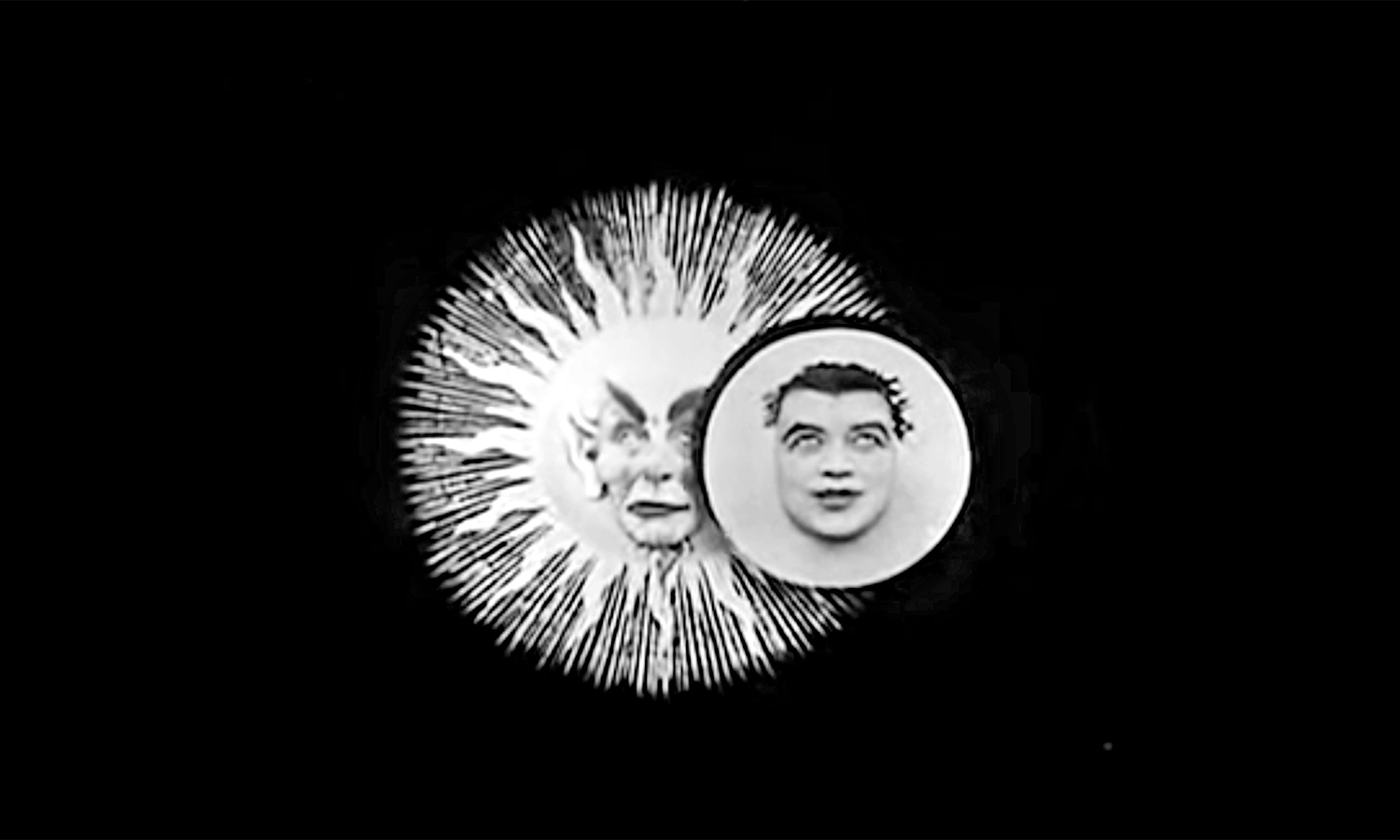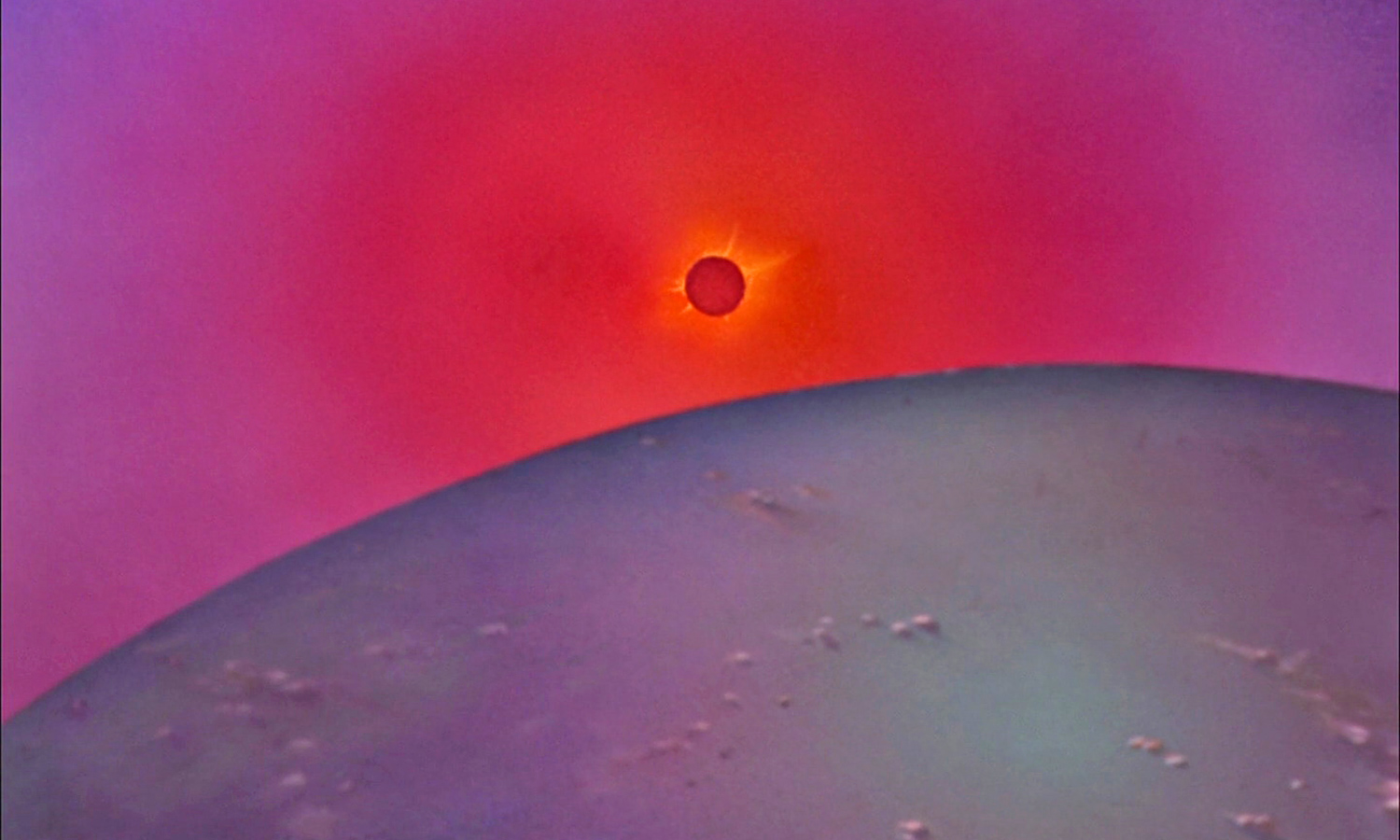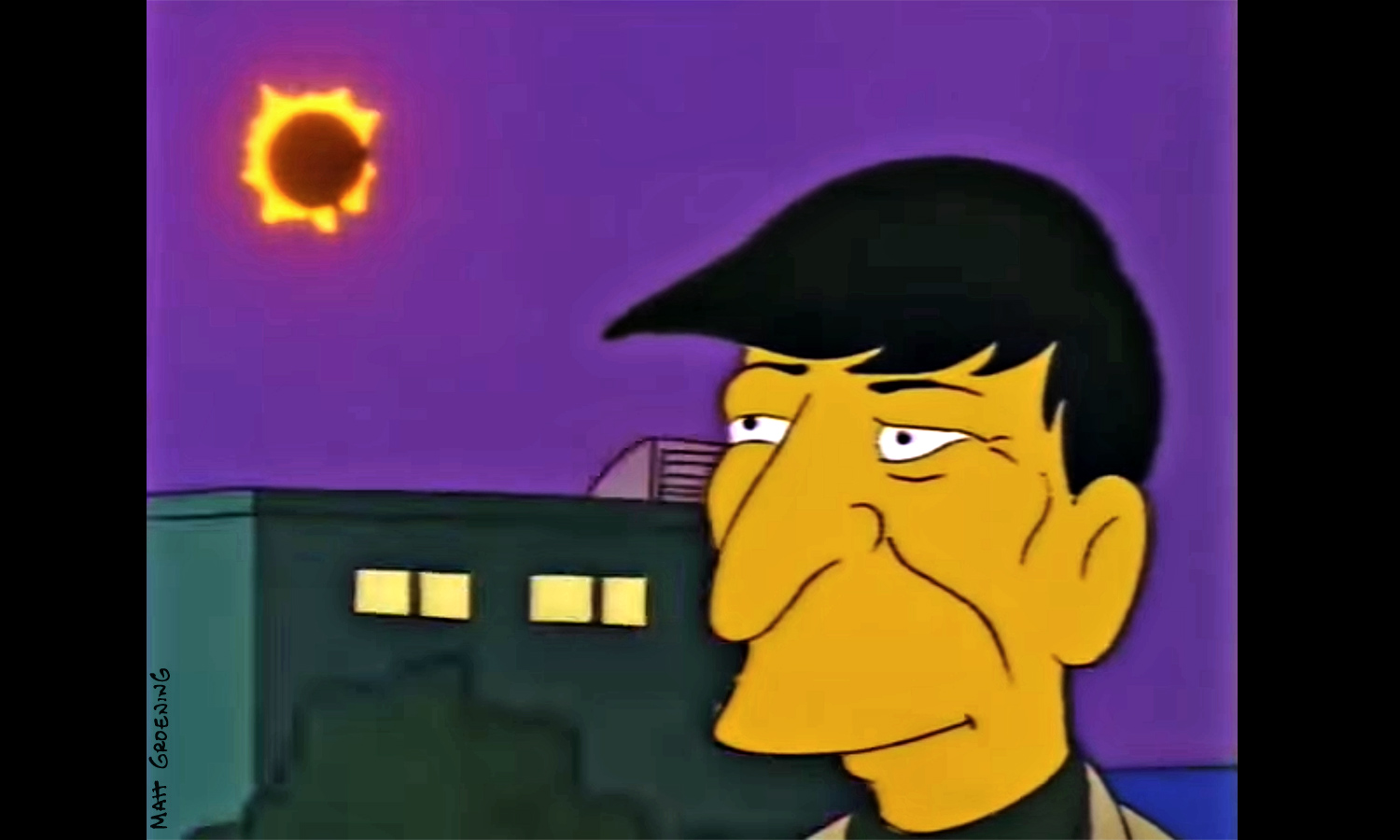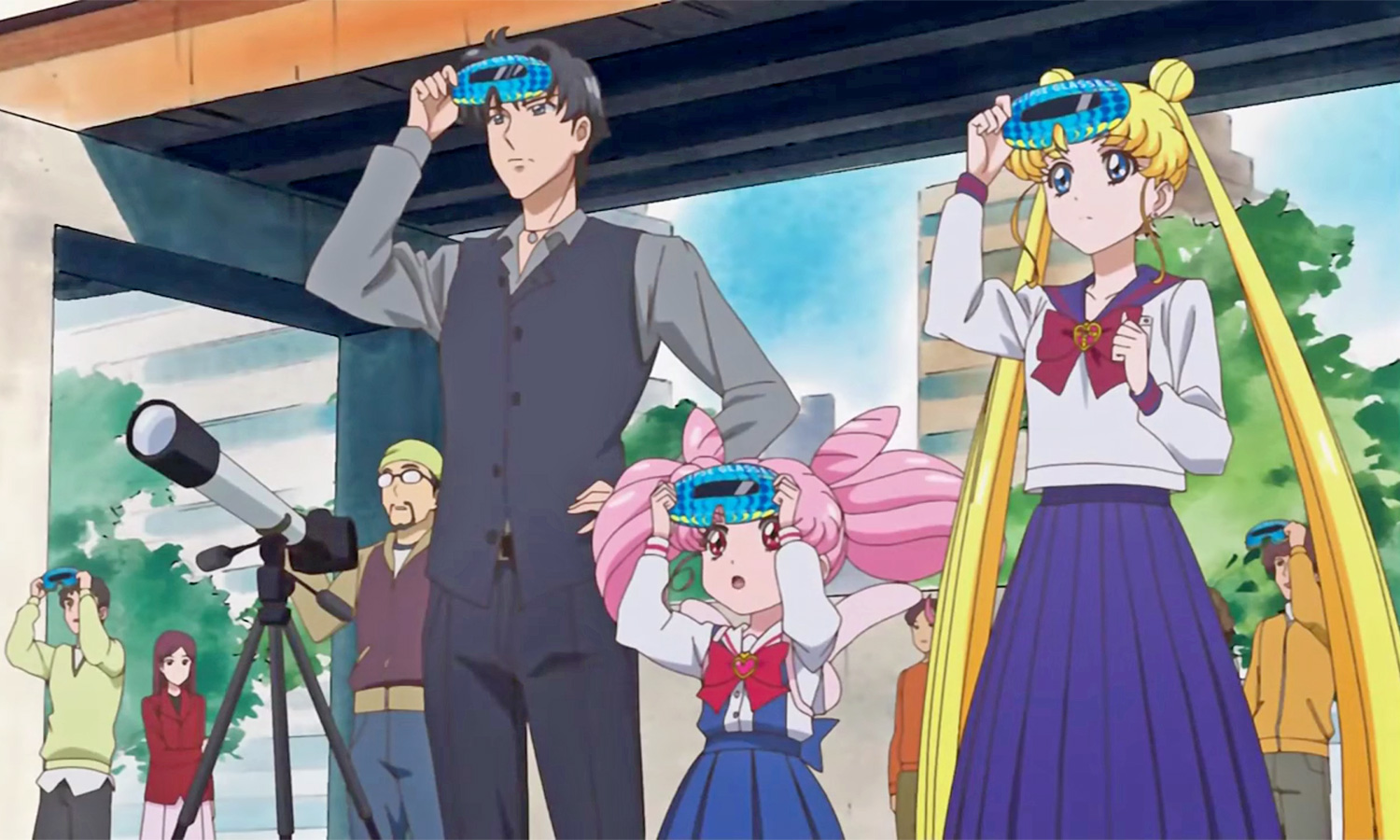Our Favorite Total Solar Eclipses from Movies and TV
The Aug. 21 total solar eclipse is just around the corner. To celebrate this major celestial event, we've rounded up some of our favorite movies and TV shows that feature total solar eclipses. There are many, many examples that aren't included on this list, so be sure to tell us your favorites in the comments!

"The Eclipse, or the Courtship of the Sun and Moon" (1907)
Directed by Georges Méliès
Watch a clip (3:11-4:36)
Director, producer, designer and editor Georges Méliès was certainly not shy about being creative: If you've heard the auteur's name before, it is because he is the French filmmaker behind the iconic 14-minute silent film, "A Trip to the Moon." Five years later, Méliès used innovative special effects to bring the solar eclipse to the big screen in "The Courtship of the Sun and Moon."
And what a courtship it is! The solar eclipse inspired a rolling classical soundtrack that is reminiscent of a romantic ballet. The boyish face playing the moon mischievously raises his eyebrows as the big-eared, almost demonic-looking sun licks its lips and watches the moon approach. When the eclipse is over, both are somber, missing their fun from overlapping in the sky.

"Fantasia, The Rite of Spring" (1940)
The total solar eclipse ushers in the well-recognized bassoon solo of Igor Stravinsky's classical piece "The Rite of Spring," as the violent dinosaur saga in Disney's "Fantasia" comes to a calm, resolute ending. The solar eclipse makes the erasure of dinosaur bones by strong earthquakes and tumultuous winds more dramatic, showing that their existence had come and gone. Live Science reported in 2015 that there might be truth behind the animation: Although the solar eclipse has not be proved, it seems that the Chicxulub meteor impact that likely ended the reign of the dinosaurs also triggered magnitude-11 earthquakes that caused massive lava flows in what is now India.
Get the Space.com Newsletter
Breaking space news, the latest updates on rocket launches, skywatching events and more!
"Barabbas" (1962)
Directed by Dino de Laurentiis
In this film, audiences see a (real) total solar eclipse used to heighten the end of life. Barabbas, a biblical character who was freed from prison in exchange for Jesus' crucifixion, was played by Sir Anthony Quinn, in what is considered one of his best performances. Barabbas' first encounter with the eclipse is when he awakens from sleep, and, noticing how dim the light is, exclaims, "Everything is black. Black is death."
The solar eclipse scene was a significant achievement in movie history, and established a cinematic precedent. The director filmed a real solar eclipse about 130 miles (208 kilometers) north of Rome, in a place called Roccastrada, Italy, and it was worth the effort. The director was told before filming that it was risky to shoot directly at the sun, and that the darkness of the eclipse would make the scenery too dim for existing Technirama and Technicolor cameras. De Laurentiis was right to trust his instincts.
"The Watcher in the Woods" (1980)
Directed by John Hough
In the climax of this 1980's thriller, news of an impending solar eclipse starts a race against time to stop the spirit of a girl named Karen from haunting the teenage protagonist. The paranormal activity is tied to an earlier solar eclipse that caused Karen to mysteriously disappear. Some historians believe that the abundant superstition surrounding solar eclipses is caused by how human civilizations have relied on the "rhythms of the sky" to give order to the world. The film also shows a girl rocking a box-shaped prototype of a solar eclipse viewer.
"Ladyhawke" (1985)
Directed by Richard Donner
"A night without day. A day without night."
In the magical drama "Ladyhawke," the plot's premise is that solar eclipses are remarkable moments because the sky simultaneously entertains day and night. The hero becomes a wolf by night, and his beloved becomes a hawk by day. It makes sense that the folkloric resolution to this problem would involve a solar eclipse, when the sky gets a little confusing for not just people, but also for animals. Scientists have found that nocturnal creatures come out during a solar eclipse, even though it is technically daytime. And birds that rise in the morning begin to go quiet as the eclipse leads them to believe it is sunset.
"Little Shop of Horrors" (1986)
Directed by Frank Oz
Rick Moranis played flower-shop clerk Seymour Krelborn who discovers a plant that got zapped by green — so probably evil — solar eclipse energy. The plant is an exaggerated version of a Venus flytrap, and has a penchant for human flesh. We'll spare you any more gory details. However, according to horticulturist Bob Polomski of Clemson University, certain plants might actually react to a solar eclipse, particularly because of the appearance of night that the event produces. Polomski has noted that when the sky darkens, the light movements of leaves alter, and other plants are triggered into releasing their fragrances for night insects. According to Clemson, Polomski will be observing these behaviors during the Aug. 21 solar eclipse.

"The Simpsons," Episode: "Marge vs. the Monorail" (1993)
Directed by Rich Moore
Sometimes solar eclipses actually bring relief, instead of causing mayhem. In this "Simpsons" episode, Homer gets a bit of relief when the eclipse temporary blocks sunlight, causing the runaway solar-powered monorail he is on to stop in its tracks. The hilarious scene also features Leonard Nimoy, who was the iconic Spock in "Star Trek." In the scene, Nimoy plays a cartoon version of himself, and gives a touching reflection about the wonder that total solar eclipses make people feel. The "Simpsons" episode also highlighted a truth about solar energy production decreasing during solar eclipses. In fact, the 2015 total solar eclipse in Europe prompted agencies to put solar power in reserves, because the panels received significantly less of the solar resource during the moon's eclipsing of the sun.
"Judy Berlin" (1999)
Directed by Eric Mendelsohn
In this movie, the total solar eclipse acts as a catalyst that causes the suburban townsfolk to examine the darker aspects of their realities, and come to a better understanding of themselves. This theme of conflict resolution has been witnessed during much earlier stories of total solar eclipses. For example, a battle between the Medes and the Lydians in the sixth century B.C. was halted by a solar eclipse, and inspired the warriors to make peace.
"Apocalypto" (2006)
Directed by Mel Gibson
"Apocalypto" takes place in the year 1511, in what is now central Mexico. When the protagonist Jaguar Paw is about to be sacrificed by the Mayan king, a total eclipse appears, and Jaguar Paw's life is spared. The Mayan civilization, like many societies at that time, used mythology to explain natural events like the eclipse. According to Live Science, Mayan glyphs, or markings, depict a solar eclipse as a dragon-shaped star demon that is about to swallow the sun. These star demons were the way that Mayans explained the planets, like Venus and Mercury, which become visible during the brief moments of a total solar eclipse.

"Sailor Moon Crystal" (Season 3) (2015)
Directed by Munehisa Sakai
In the third season of the Japanese anime classic, a total solar eclipse unleashes the wild-haired villains known as the Dead Moon Circus, and enables tortured-soul Nehelenia to break free from her prison inside a mirror. Sailor Moon was able to rekindle Nehelenia's cold heart by the end of the season, and not dissimilarly, cultures in Asia and South America would try to rekindle light after an eclipse by banging pots and shooting arrows up into the sky.
Follow us @Spacedotcom, Facebook and Google+. Original article on Space.com.
Join our Space Forums to keep talking space on the latest missions, night sky and more! And if you have a news tip, correction or comment, let us know at: community@space.com.

Doris is a science journalist and Space.com contributor. She received a B.A. in Sociology and Communications at Fordham University in New York City. Her first work was published in collaboration with London Mining Network, where her love of science writing was born. Her passion for astronomy started as a kid when she helped her sister build a model solar system in the Bronx. She got her first shot at astronomy writing as a Space.com editorial intern and continues to write about all things cosmic for the website. Doris has also written about microscopic plant life for Scientific American’s website and about whale calls for their print magazine. She has also written about ancient humans for Inverse, with stories ranging from how to recreate Pompeii’s cuisine to how to map the Polynesian expansion through genomics. She currently shares her home with two rabbits. Follow her on twitter at @salazar_elin.









